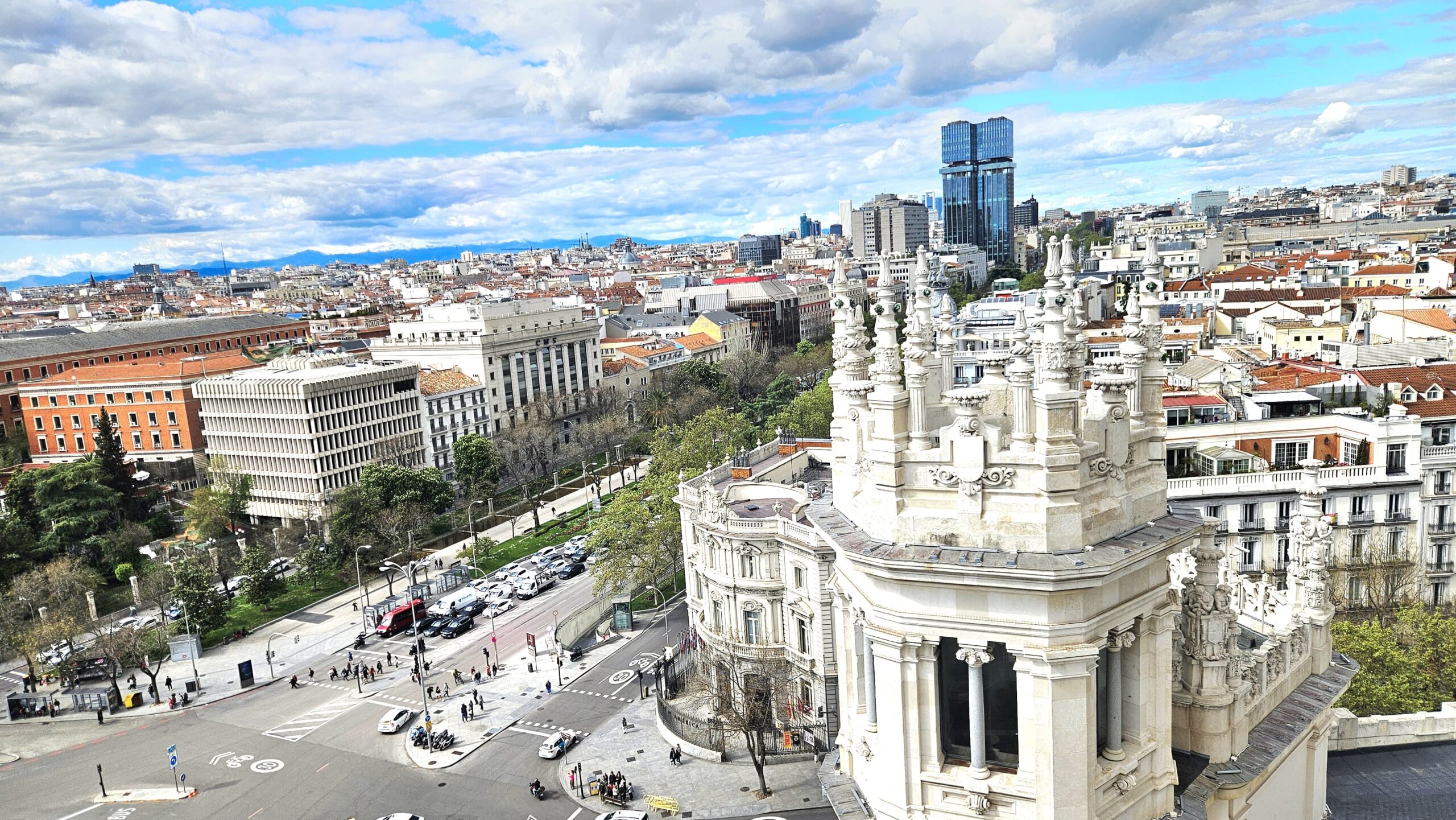Madrid the capital city of Spain

I took a trip to Madrid, the capital of Spain, which proudly houses the legendary Real Madrid football club. So, whether you are planning a Spanish escape or simply dreaming from your sofa, let me tell you about four unforgettable spots in Madrid.
Jardín Vertical Caixaforum
If you think city walls are just for bricks and posters, wait until you see the Jardín Vertical at CaixaForum, Spain's first vertical garden. This garden is on the wall of the old Mediodía electric power station which has now been turned into a cultural spot.
I was amazed when I saw it for the first time. Picture this: different plant species, on the building wall. It’s like nature decided to paint a masterpiece on a city building! The garden was designed by Patrick Blanc, a French botanist, and it is not just beautiful. it also cools the wall in summer and insulates against the cold in winter. What also makes it special is that it is soilless.
Locals and tourists stop to admire it, snap photos, and even touch the leafy display. It is a work of art you can enjoy for free, any day of the week.

Templo de Debod
Ok, imagine that you are walking through Madrid and suddenly, you stumble upon a real, ancient Egyptian temple. No, you are not dreaming or teleporting—you have just discovered one of the city’s most unexpected landmarks: the Templo de Debod. “Wait, what? How did that get here?”
For centuries, the temple stood there, watching the river Nile’s flow. Then in the 20th century, a new kind of flood happened—not from the river, but from the construction of Aswan High Dam. In the 1960s, the construction of this dam threatened to submerge hundreds of ancient monuments forever.
So, Egypt called for help to save their monuments and guess what Spain answered. Spain made efforts and contributions to save the Abu Simbel temples.
To show gratitude, The Egyptian government gifted Spain something special: the Templo de Debod. The temple was carefully dismantled, packed up, and shipped—piece by piece—to Madrid. In 1968, the temple began a new life in Madrid and by 1972, the temple was opened to the public. Yes, you can find Egypt in Madrid.
Guess what, entry into the temple is free! Step inside to see ancient stone chambers, hieroglyphic carvings, and exhibits explaining the temple history.
This temple connects Madrid with the mysteries of ancient Egypt.

Cibeles Palace
This is one building never fails to leave me in awe — the Cibeles Palace. Imagine this: elegant white spires reaching for the sky, a structure so ornate and grand that you might think you have stumbled into a fairytale. But no, this is not fiction — it is real and spectacular.
Originally built between 1907 and 1919 as the headquarters of the Spanish postal service, the palace has since been transformed into something even more significant. Since 2007, it has served as Madrid’s City Hall, a symbol of both history and transformation. But don’t worry — you don’t need official business to step inside, and it is free to visit.
Step inside and you are greeted by a breathtaking glass roof that floods the space with golden sunlight — a perfect fusion of old-world grandeur and modern design. Art lovers will be delighted too, as you will find exhibitions that add creative spark to the building.
A major highlight for me is the rooftop terrace. From up there, you get a sweeping view of Madrid’s skyline —rooftops and the city buzzing beneath your feet. I was lost in the moment as time slipped to hours of me snapping photos and soaking in the view of the city.
Ok outside the palace is the Cibeles Fountain that steals the spotlight — a majestic sculpture of Cybele, the Phrygian goddess, riding a lion-drawn chariot. It is not just a stunning monument; it is a cultural icon. Sometimes, this is where Real Madrid fans gather to celebrate their victories, waving flags and singing in unison. It is also a gathering point for national parades and cultural demonstrations, making it a powerful symbol of Spanish national pride and unity.

El Retiro Park
The iconic El Retiro Park, a UNESCO World Heritage Site. One of its main attractions is the sparkling artificial lake, where you can rent a rowboat and sail across the water under the regular Spanish sunlight.
As you paddle or stroll along the water’s edge, you will spot the Monument to Alfonso XII, a tribute to the young king remembered for bringing stability during one of Spain’s most turbulent eras. Sadly, Alfonso XII died at just 27 from tuberculosis — a sad end to a promising reign. Yet, his legacy lives on in the form of this statue.
Also in the park, you can find the Fountain of Isabella II, who became the queen of Spain at the age of 3.
At the entrance of the El Retiro Park, you will find the Madrid gate, Puerta de Alcalá. There is a Latin inscription at the gate's highest point with the inscription: REGE CAROLO III ANNO MDCCLXXVIII which is translated as the reign of Charles III, year 1778.

